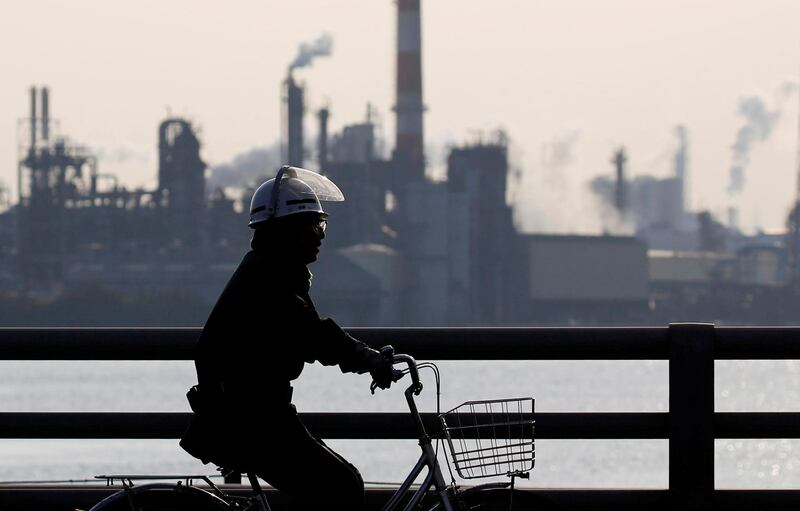Asia’s factories ended a strong 2017 on a mixed note, with activity at multi-year highs in Taiwan and surprisingly picking up in China, but contracting in some economies in a sign that any interest rate rises in the region will be slow and gradual.
A trend of synchronised global growth that became apparent over the course of last year looked set to continue, with activity surveys in the euro zone and the United States later in the day expected to post strong readings.
In China, manufacturing growth unexpectedly picked up to a four-month high in December amid a surge in new orders, suggesting continued strength in global trade.
The Caixin/Markit Manufacturing Purchasing Managers’ Index (PMI) rose to 51.5 last month, from 50.8 in November, and far outpaced economists’ expectations for a dip to 50.6. The 50-mark divides expansion from contraction on a monthly basis.
________________
Read more:
China factory momentum remains intact amid smog and debt curbs
UK manufacturing unexpectedly accelerates to four-month high
________________
Tuesday’s survey, which pushed Asian shares .MIAPJ0000PUS to their highest in a decade, was somewhat at odds with a much larger official China PMI survey on Sunday. It showed a slowdown in growth amid a crackdown on pollution and measures to curb risky financing and cool the housing market.
Analysts say the difference stems from the fact that the Caixin/PMI index tracks smaller, private firms, more sensitive to exports.
China is expected to have grown by close to 7 per cent in 2017, but the world’s second largest economy is likely to slow in the new year on the back of those measures, highlighted as policy priorities at October’s key Communist Party congress.
Beijing is expected to target 2018 growth at around 6.5 per cent.
“We anticipate further weakness in the coming quarters as tighter monetary conditions continue to weigh on economic activity,” said Julian Evans-Pritchard, senior China economist at Capital Economics.
For the rest of Asia, the pace of rate increases is unlikely to match that of the US Federal Reserve, which is seen hiking 2-3 times in 2018.
“Monetary policy will likely lag the Fed’s for a while, with only a few rate hikes here and there across the region over the coming two years,” HSBC analysts said in a note.
In November, the Bank of Korea raised interest rates for the first time in more than six years to 1.50 per cent, becoming the first major Asian central bank to hike since 2014. It is expected to be joined by Malaysia and Philippines early this year and Australia and New Zealand later on.
On Sunday, South Korea’s central bank chief said monetary policy should remain accommodative as inflationary pressures remained weak. Factory activity, which has been riding a global tech boom, contracted in December, dropping from a 4-1/2 year high in November, the Nikkei/Markit survey showed.
Another major tech producer, Taiwan, saw manufacturing activity hitting its highest since April 2011 at 56.6 last month, according to a survey.
Singapore, which emerged last year as a player in the electronics industry, on Tuesday posted slower economic growth in the fourth quarter as manufacturing shrank 11.5 per cent following an eye-popping 38 per cent jump in the previous three months.
Full-year growth, however, was still the fastest in three years at 3.5 per cent, raising the possibility that the Monetary Authority of Singapore could tighten its exchange rate-based policy this year.
“Given robust GDP growth and inflation upside risk, we think MAS will shift and tighten to a ‘mild appreciation bias’ at the April meeting,” Maybank Kim Eng economist Chua Hak Bin said.
December factory activity accelerated in Vietnam, but shrank marginally in Malaysia and Indonesia. A similar survey for India will be published later on Tuesday.






